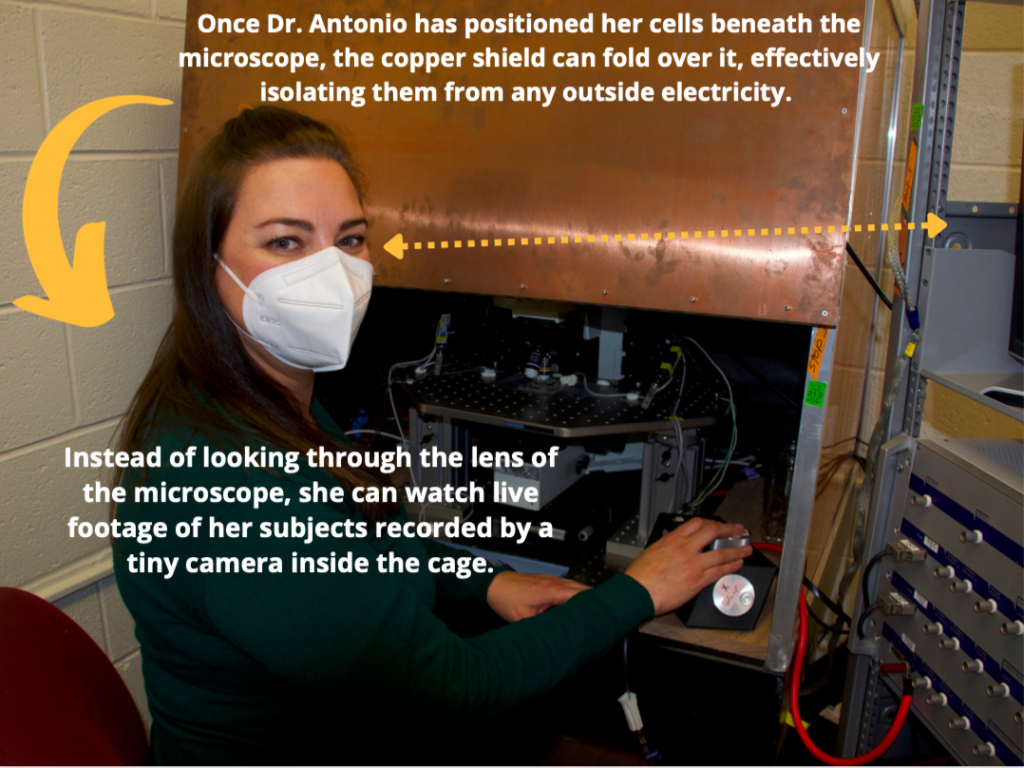
The following interview was edited for clarity and length.
HP: What drew you to the sciences in the first place?
LSA: I grew up observing the sky with my dad, whose life’s work was in the field of meteorology. We enjoyed talking about meteorological phenomena and the stars, as well as visiting museums and aquariums. This drew me to a love of all kinds of sciences as a kid. When I was in high school, I felt so inspired by my biology and physics courses, I decided to try a Biomedicine Bachelor program.
HP: What inspired you to study this subset of physiology?
LSA: In my first year at university, I fell in love with cell physiology and biophysics. I even convinced my friends to apply for one of the elective courses so we could reach the minimum number of students for the class! After that, I dedicated myself to any and all courses, internships, and meetings I could find that were related to this field, until I was accepted for the masters program in physiology and membrane biophysics!
HP: What do you study here at the Department of Cell Biology and Physiology?
LSA: We study the auditory pathway. What’s in the auditory pathway? Well — the pathway starts with the ciliated cells, which are hair-like cells that convert mechanical sound to electrical signals. Once the signals are electrical, the cell makes a connection with the first neuron on the pathway. At the end of the pathway, the signal is received in the auditory cortex, [the area] where we “understand” it.
Watch Dr. Antonio further explain How Sound Travels to the Brain.
LSA: [In nervous cells], we can also measure the currents carried by the movement of the ions, which have a [positive or negative] “charge” — like in the elements calcium or potassium. We can either record the currents or we can record the voltage [to measure the bioelectricity.]
HP: Interesting! So what’s the voltage?
LSA: The voltage is just the change in the potential difference between the inside of the cell and the outside of the cell. There is a response because the ions — positively and negatively charged — are moving.
With both of these types of measurements, the amount [of voltage] is extremely small. Very, very small. And plenty of things in this room are sources of electricity: from the equipment around us, from our clothing, and even from our bodies. The copper in the Faraday cage works to cancel out all the “noise” around us, [so that we may] observe the cell’s electricity in isolation.



HP: What’s your favorite research topic? And the best project you’ve worked on in the past?
LSA: There is but one that is the apple of my eye: the studies related to ATP-gated channels, and the Purinergic Receptors, “P2X.” At one point, I even had a car license plate with my initials and the receptors: LSA P2X!
HP: P2X receptors are ligand-gated ion channels that open for ions when ATP (an energy-carrying molecule) binds to them. These receptors are widely present in mammalian tissues, including the ear.
P2X are receptors formed by three subunits, and there are several distinct types of subunits that can form the proteins that work as ion channels. The number of different subunits can influence the ion channel function. I think that’s one of the reasons why this topic fascinates me! During my Ph.D., we even described a type of interaction with three distinct subunits for the first time.
HP: What has been the biggest challenge in your STEM career?
LSA: The challenges I faced since I started researching in 2005 mostly related to [attaining] financial support for my projects. This challenge is known to all science professionals working in research!






